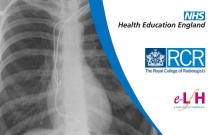Acute and Late Effects of Proton Treatments
Rovel Colaco
0.50 Hours
This session outlines how acute and late toxicities may differ between proton and photon radiotherapy, and the potential for proton beam therapy (PBT) to reduce some late radiation related side effects. It explains the rationale for clearly defined patient follow-up schedules with careful collection of tumour and toxicity outcom....
Radiation Protection for Proton Beams
David Lines and Mark Hardy
0.50 Hours
This session describes the principles of radiation protection relating to the delivery of proton beam therapy (PBT). It highlights the key differences between PBT and photon radiotherapy from a radiation protection perspective and gives an overview of practical considerations required for a clinical PBT centre.
Characteristics of Clinical Proton Beams
David Eaton
0.25 Hours
The session describes the major characteristics of proton beams, how they differ from photon beams, and their potential clinical consequences.
Psychosocial Assessment in Dermatology Practice
Andrew Thompson and Kerry Montgomery
0.50 Hours
This session will explore the psychosocial assessment of dermatology patients and provide tools to aid assessment. The session aims to build confidence and desire to assess for the presence of psychosocial distress in patients presenting with skin conditions.
Psychological Interventions for Dermatology Patients
Andrew Thompson and Kerry Montgomery
0.50 Hours
By the end of this session you will be able to describe the role of some primary care psychological interventions that may be of use for dermatology patients.
Actinic Keratosis and Bowen’s Disease
Phil Preston
This session will highlight the clinical presentation and management options of actinic keratosis and Bowen's disease.
Principles of the Management of Head Injury and Brain Protection
Alex Manara and Matt Thomas
0.50 Hours
This session provides an overview of the fundamental principles of the management of moderate and severe traumatic brain injury, concentrating on the hours immediately post-injury. After discussing classification of head injury the session covers assessment, resuscitation, radiology and referral, and the essentials of ongoing....
Cervical cord injury and critical care
Michelle Denton MBChB FRCA and Justin McKinlay MA (Oxon) BM BCh FRCA
0.50 Hours
The majority of spinal cord injuries (SCI), involving previously healthy young adults, result from trauma; 37% occur after road accidents, 42% follow falls, 11% are associated with sports and recreational activities, and 3% after assault.
Abdominal Trauma
Nanda Venkatanarasimha and Bruce Fox
0.50 Hours
This session describes the abdominal trauma seen in clinical practice the imaging appearances of different organ injury.
BJA Education: Smoke inhalation injury
Preea Gill FRCA and Rebecca V Martin FRCA FFICM
0.50 Hours
Smoke inhalation injury can be defined as damage caused by breathing in harmful gases, vapours, and particulate matter contained in smoke. It can manifest as a thermal injury, chemical injury, and as systemic toxicity, or any combination of these.
CT Anatomy: Lobes, Segments and Airways
Siobhan Green and Sujal Desai
0.50 Hours
The thorax is comprised of the structures of the mediastinum and lungs; mediastinal structures are linked to the lungs through the hila. This session introduces you to the normal computed tomography (CT) appearance of these structures.
CEACCP: Point-of-care coagulation testing
Amit Srivastava FRCA FFICM and Andrea Kelleher MB BS FRCA
0.50 Hours
Amit Srivastava and Andrea Kelleher give an in-depth overview of point-of-care coagulation testing
Cardiac Output Monitoring I
Sharon Avery and Max Jonas
0.50 Hours
This session aims to provide a rationale behind cardiac output monitoring and a sound understanding of the physiological principles behind the available technology.
Oesophageal Doppler Cardiac Output Monitoring
Peter Anderson and Robert Kong
0.50 Hours
This session will cover the basic principles underlying oesophageal Doppler cardiac output monitoring, the practicalities of use of the monitor and clinical applications.
Burns and Epilepsy
Fergal Marlborough and Sarah Pape
0.50 Hours
This session will explore the link between burns and epilepsy and describe the investigations required for burn patients with uncontrolled epilepsy. Later, it will describe how patients with epilepsy can reduce the risk of future accidental burns.
Breast Disease: Breast Pain
Dan Cocker
0.25 Hours
This session is designed to introduce the user to the common causes of breast pain.
Peripheral Vascular Disease Chronic Limb Ischaemia
Devender Mittapalli
This session covers essential information on chronic limb ischaemia required to pass the MRCS examination. It also provides the essential knowledge and skills required for Foundation and Core surgical trainees in their day-to-day practice.
Peripheral Vascular Disease Acute Limb Ischaemia
George Dovell and Devender Mittapalli
0.50 Hours
This session describes the presentation, aetiology and management of acute limb ischaemia.
Peripheral Vascular Disease: Varicose Veins
Devender Mittapalli
0.75 Hours
This session covers essential information on varicose veins required to pass the MRCS examination. It also provides the essential knowledge and skills required for Core trainees in their day-to-day practice.
Peripheral Vascular Disease Leg Ulcers
Alan Elstone and Devender Mittapalli
0.50 Hours
This session provides an introduction to the key facts surrounding the development and management of lower limb ulceration. It presents an overview of the common aetiologies and symptoms and considers the interventional and conservative management available.
Organ Trauma: Thoracic Trauma
Stella Smith
0.50 Hours
This session outlines the assessment and management of thoracic trauma, particularly focusing on the early identification of conditions that result in a rapid demise.
Organ Trauma: Splenic Trauma
Mansoor A Khan
0.50 Hours
This session will provide an overview of the anatomy of the spleen, and the aetiology and management of splenic trauma.
Organ Trauma: Managing Skin Loss with Use of Skin Grafts and Skin Flaps
Jing Qin Tay and David Watt
0.25 Hours
This session outlines the key principles in managing skin loss with the use of skin grafts and skin flaps.
Cardiac MRI Anatomy and MRA
Giles Roditi
1.00 Hours
This session provides introduction to basic principles and techniques of cardiac MRI.
Complications of Myocardial Infarct
Andrew Wood
0.50 Hours
This session is designed to acquaint the student with the imaging features of the complications of myocardial infarction.
























